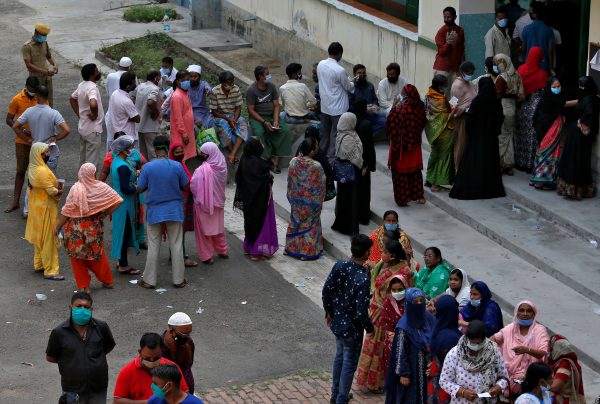India, the world’s largest democracy, faced reputational backlash in March from two global organisations. Freedom House downgraded India’s status from a ‘free’ to a ‘partially free’ democracy, citing the BJP-led central government’s crackdown on critics and the persistent scapegoating of minorities, especially Muslims. The V-Dem Institute went a step further and listed India as an ‘electoral autocracy’.
Both reports underscored developments that followed the 2019 general elections in which the BJP-led coalition secured a landslide victory. The passage of the Citizenship Amendment Act (CAA) in December 2019 triggered nationwide protests that were heavily suppressed by security forces. The ensuing religious riots in Delhi exposed police complicity and the central government’s indifference to deadly violence. Internet restrictions, a year-long crackdown in Jammu and Kashmir, and a nationwide clampdown on journalists, civil society activists and political dissent have deformed India’s democracy.
Yet, for Prime Minister Narendra Modi, these issues appear to have had little impact on electoral outcomes. The BJP-led National Democratic Alliance emerged as the winner in the November 2020 Bihar Legislative Assembly election, despite its failure to manage the COVID-19 pandemic and the migrant crisis in the state.
There is a growing show of support for the BJP as it now sweeps elections across central and western India and makes history in the northeast. In many states, like Assam, the so-called ‘Modi wave’ of electoral success came on the back of a strong anti-incumbency sentiment.
The BJP political machine is a remarkable operation, involving some 180 million members, a digital-based apparatus and enormous corporate funding, making it a formidable force. While the BJP and its offshoots trumpet a theocratic agenda to appeal to the majority Hindu population, the voter base is segmented across the board.
For the BJP, winning the West Bengal election would reinforce its position in the east and assist it in the implementation of its ideological and political agenda, including the CAA. Unlike the legislative elections in southern India, where winning was not on the cards for the BJP, in West Bengal the TMC’s dented image forms the overarching election theme.
The TMC’s use of symbolic policies to woo Muslim voters has led to increasing polarisation. Yet, the Muslim community remains under-represented despite constituting 27 per cent of the state’s population.
The BJP has taken advantage of this polarisation in looking to garner support from subaltern Hindus, who feel hard done by as successive governments have failed to improve their socio-economic conditions.
Growing anti-incumbency in the state has been fuelled by corruption allegations in various government schemes. There were widespread allegations of rent seeking and mismanagement by local TMC leaders in the distribution of Cyclone Amphan relief in 2020. Targeted political violence against rivals, shrinking space for dissent and alleged voter intimidation have become ingrained in the state’s political landscape. Though there were attempts to manage voter expectations and institute reforms within the party, the extent to which the TMC can change public perception remains unclear.
There is little doubt about the strong support that Chief Minister Mamata Banerjee enjoys in West Bengal. Her perceptibly abstemious lifestyle contrasts strikingly with the larger-than-life image of Modi. But public resentment against local TMC leaders is the major unaddressed issue.
While Banerjee’s influence has far from faded, the BJP’s organisational strength and support for right-wing parties are undoubtedly growing. The subaltern class, whose socio-economic conditions were largely overlooked by successive governments, are set to challenge the status quo. For lower castes, Modi personifies the hope of an eventual socio-economic uplifting. Under Modi, the BJP has been incredibly successful in finding the electoral pulse.
Even if the TMC keeps office, anti-incumbency will be the new normal for Chief Minister Banerjee as the BJP makes substantial inroads. But this election is not only a trial of ‘Bengali exceptionalism’ — it is also an occasion for India to once again acknowledge brewing resentment against a culture of entitlement and establishment.
Manas Nag is a security specialist at a global security assistance provider based in Singapore.

